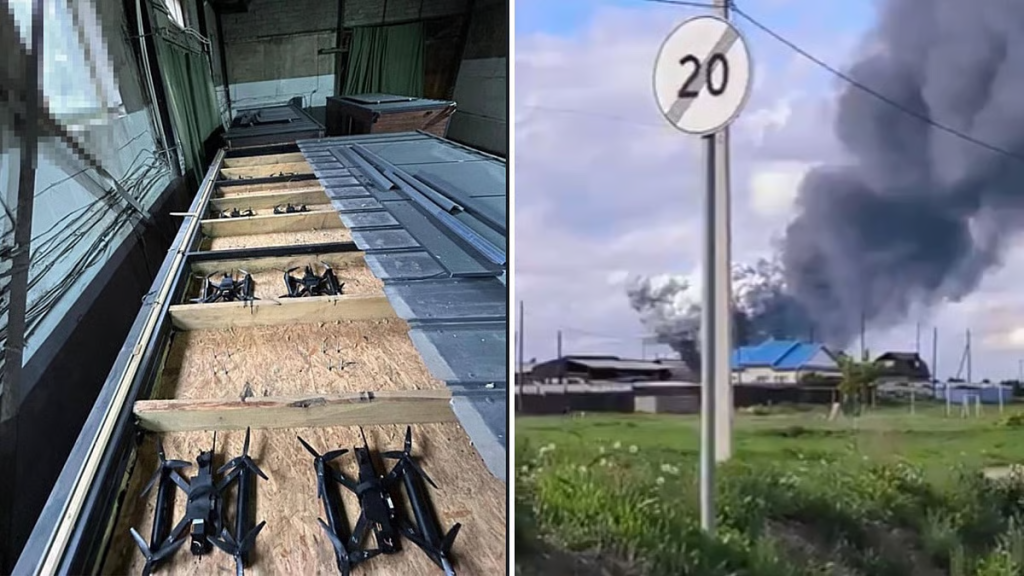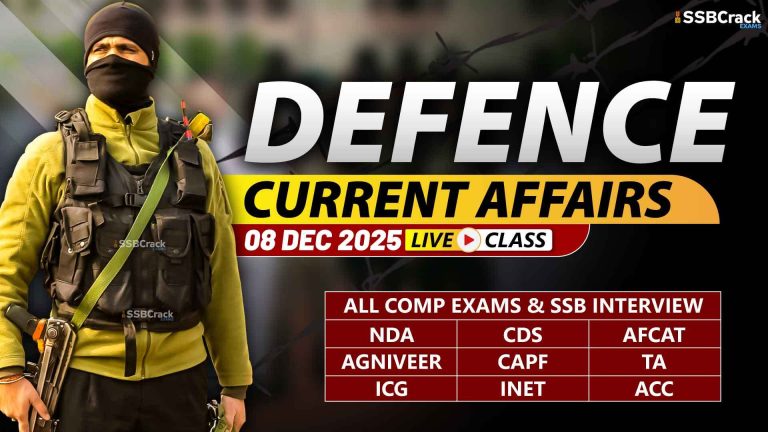In a bold and unprecedented military operation, Ukrainian special forces have executed what is being described as one of the largest and most complex special forces drone strikes in modern warfare history. This operation targeted strategic Russian airbases, damaging or destroying 41 strategic bombers, including Tu-95s, Tu-22s, and A-50 airborne radar aircraft — all while they were parked on the ground.
Ukraine’s Drone Blitz: Operation Spider Web
A Historic Strike
This Ukrainian assault, which utilized over 100 drones launched from shipping containers, has sent shockwaves through global military communities. The scale was staggering — simultaneous attacks on Olenya airbase in Murmansk and another in Irkutsk, Siberia — over 6,000 km apart and across three time zones. This mission is being compared to legendary special operations like Israel’s 1976 Entebbe raid and India’s 1971 Operation Jackpot. In terms of complexity and impact, Ukraine’s operation stands as a historic milestone.
Using civilian logistics and remotely operated drones, Ukraine carried out the attacks without risking the capture of any personnel. Ukrainian President Volodymyr Zelensky emphasized the operation was completely independent, stating that it was executed “solely by Ukraine” without NATO or Western military support. No Western-supplied weaponry, such as Taurus missiles, were used. Instead, Ukraine relied on commercially available high-resolution satellite imagery to identify and strike the aircraft.
A Blow to Russian Strategic Capabilities
The impact on Russia’s military is significant. The destruction of over 30% of its strategic bomber fleet not only hampers its ability to conduct long-range conventional strikes but also weakens its nuclear strike capabilities. Given that these aircraft are central to Russia’s nuclear delivery systems, the attacks raise serious concerns in Moscow.
In retaliation, Russia launched over 400 drones against Ukrainian targets on June 1. The Kremlin has hinted at possible further escalations, raising fears of unconventional responses, including the use of hypersonic missiles or even nuclear weapons, a threat that has loomed since the beginning of the war.
A New Era of Drone Warfare
This operation underscores a key transformation in modern warfare — the ascendancy of drones. The Russia-Ukraine war has become a proving ground for unmanned combat systems, where FPV (First Person View) and wire-guided drones are redefining battle tactics. These drones have created battlefield environments akin to World War I trench warfare, where open movement is extremely dangerous due to the omnipresence of drone surveillance and attacks.
Drones are no longer just tools for reconnaissance. They are now frontline weapons, replacing traditional platforms like fighter jets, helicopters, and even small arms in some roles. The use of low-cost, high-impact drone swarms represents a paradigm shift in strategic and tactical military planning.
Implications and Lessons for India
The Ukrainian strikes carry critical lessons for countries like India. India has already experienced the vulnerability of its military bases to drone threats. In 2021, two drones dropped IEDs on an airbase in Jammu — an attack believed to involve Pakistani state-backed actors. Fortunately, it caused no fatalities, but it demonstrated the ease with which drones can bypass traditional air defenses.
India must take urgent steps to harden its airbases and critical infrastructure against drone-based threats. Aircraft parked in the open are highly vulnerable, and commercial satellite imagery makes hiding them increasingly difficult. The era of surprise drone swarm attacks is no longer hypothetical — it’s a reality.
India’s own Operation Sindoor showed the offensive potential of drones, but defensive doctrines must evolve too. Investments in counter-drone systems, hardened aircraft shelters, and real-time airspace surveillance will be crucial in the years ahead.
Conclusion
Ukraine’s bold drone operation marks a turning point in modern warfare. It is not just a tactical victory but a symbolic one, showcasing how asymmetric, tech-driven operations can devastate even a nuclear power. As the world watches Russia’s next move, one thing is clear: the age of drone warfare is here — and no nation can afford to ignore it.





















